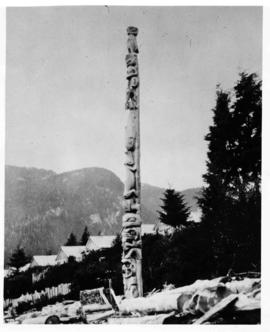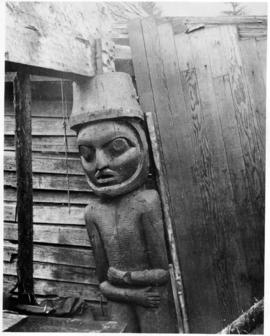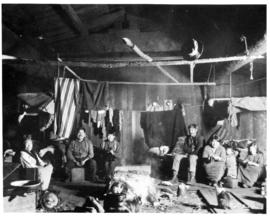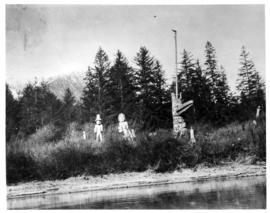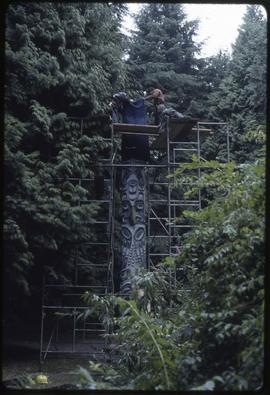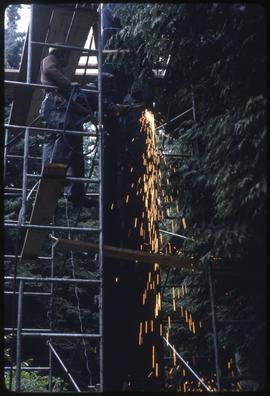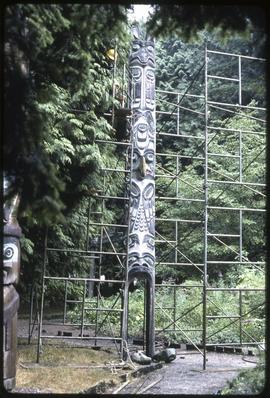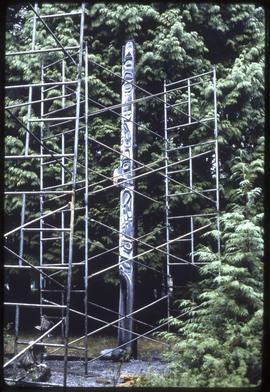Item is a recording of Tsimshian songs recorded by the American anthropologist Dr. Viola Garfield (1899-1983) of the University of Washington. The songs in this recording were sung by Matthew Johnson (ca. 1867 - ?) who was one of the leading lineage heads of the G-spaxlo-‘ts tribe, and a great admirer of the lineage of the Tsimshian chief, Legaic” (Legaik, Legex). The title Legaic was carried by at least four chiefs of the Tsimshian Eage Clan. The last-known individual to carry the title took it in 1938.The cylinder numbers referenced during the recording are #14561, #14562, #14563, #14564 .
The Dr. Viola Garfield fonds is housed at the University of Washington Special Collections. She carried out field work in the summer of 1932, 1935 and 1937 at the Tsimshian village of Port Simpson, British Columbia. An Ediphone machine provided by the University of Washington Anthropology Department was used to record and store the songs on wax cylinders, which were deposited at the University. The recordings were transferred to the open reel format in 1971. More information is available in Dr. Viola Garfield's book Tsimshian Clan and Society (1939), available in the MOA Reading Room, call number 12.7 TSI GAR.
A document that accompanied this recording contains the following text:
Document text:
Cylinder 14561
000 - Song # 1 - Matthew Johnson - marriage song composed for the wedding of Legaik’s sister to ni•s nawa•
030 - Song # 2 - Matthew Johnson - entertainment and potlaching song, a song belonging to Legaik
080 - Song #3 - Matthew Johnson - supernatural power song ni•s nawa, Sky Spirit
137 - Song #4 - Matthew Johnson - a winant secret society power song belonging to ni•s nawa• Kilutsan chief
168 - Song #5 - Matthew Johnson – a secret society song or ludzista•l song
Cylinder 14562
190 - Song #6 - Matthew Johnson, a dog eater society song. nute•m, ni•s nawa, giluska’u
255 - Song #7 - Matthew Johnson –
300 - Song #8 - Matthew Johnson - boasting song for potlatch of Legaic’s tribe
Cylinder 14563
385 - Song #10 - Matthew Johnson - supernatural power song. Legaik, wiskani•st
475 - Song #11 - Matthew Johnson - dirge ni•s nawa• limkoi
530 - Song #12 - Matthew Johnson - dirge gispaxbts, gilutsa’u
588 - Song #13 - Matthew Johnson - dirge
Cylinder 14564
614 - Song #14 - Mrs. Marsden (sp.?) – wolf clan song of kitsees
665 - Song #15 - Mrs. Marsden - song belonging to the supernatural power name lugaxli’bam laxha belonging to ni•syagane•t
774 - Song #16 - Mrs. Marsden - ni•sgune (gitsecs) supernatural power song
825 - Song #17 - Mrs. Marsden – supernatural (naxnog) power song, house of welk

